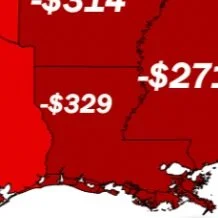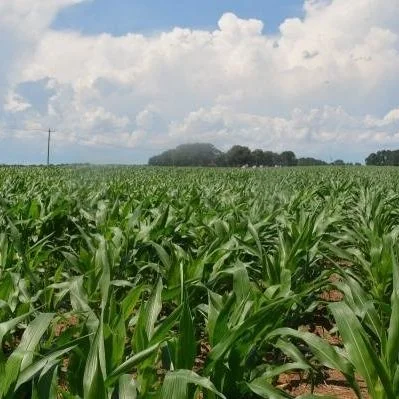For more than two decades, and over the course of the last four farm bills, farm program payments have been based on a farm’s historical planted acreage, i.e., base acres, and not on actual plantings each year. Decoupling Agriculture Risk Coverage and Price Loss Coverage farm program payments prevents farmers from making planting decisions based on expected program payments. Instead, the current system ensures farmers evaluate only market supply and demand signals and expected returns per acre when determining which crops to plant each year.
Read MorePortions of the Midwest could see the most challenging weather yet this year, and according to leading ag meteorologists, it's creating more concerns for crop conditions. With heat forecast to top 100 degrees, along with little rain in this week’s forecast, crop conditions could deteriorate and the biggest risk in the western Corn Belt.
Read MoreThere will be a cotton/corn/soybean field tour at the Northeast Research Station in St. Joseph next Tuesday, July 25th, beginning at 5 pm. It will feature talks on row spacing, fertility, weed control, disease and insect control. It will also have one stop showing the difference between planting cotton into 2 different cover crops. There will be a meal after the tours are over.
Read MoreAs the scorching sun continues to blaze across the state, Louisiana farmers are facing the challenges of a hot and mostly dry summer. However, amidst the heat and parched fields, there's a glimmer of hope for some as the corn harvest arrives earlier than expected. One such farmer, Kirk Stelly from St. Landry Parish, can't hide his excitement as he gears up to reap the rewards of his labor.
Read MoreThis month’s 2023/24 U.S. corn outlook calls for fractionally higher supplies and ending stocks. Corn beginning stocks were lowered by 50 million bushels, as greater feed and residual use for 2022/23 more than offsets reductions in corn used for ethanol and exports. Corn production for 2023/24 is forecast up 55 million bushels as greater planted and harvested area from the June 30th Acreage report is partially offset by a 4.0-bushel reduction in yield to 177.5 bushels per acre.
Read MoreSyngenta announced today that its residual corn herbicide Storen has been registered by the U.S. Environmental Protection Agency and will be available for use in 2024, subject to state approvals. Storen combines four residual active ingredients — bicyclopyrone, mesotrione, S-metolachlor and pyroxasulfone — for consistently clean rows.
Read MoreIn Monday’s Crop Progress report, corn condition improved 4% while soybeans climbed 1%.
Read MoreBetween 2002 and 2022, soybeans were the second-most planted crop in the United States, behind corn. The exception was in 2018 when acreage planted to soybeans surpassed corn. While the total acres planted to soybeans generally have been less than to corn, the rate of growth in soybean sowings has exceeded corn since the early 2000s.
Read MoreNitrogen (N) is one of the most essential nutrients required for crop growth, development and reproduction. It is the building block of proteins, amino acids, chlorophyll and DNA. Plants require more nitrogen than any other mineral nutrient. Generally, the aboveground portion of the plant contains 3% to 4% nitrogen. Therefore, fertilizing with nitrogen sources is often required for maximizing crop yield and profit.
Read MoreThe Louisiana Corn Festival is underway in Bunkie.
The Louisiana Corn Fest started in 1986 and is still the only corn festival in the state of Louisiana. The festival honors the impact that agriculture has on our economy, and a corn farmer is honored each year at the festival.
Read MoreFreezing temperatures didn't reduce insect pressure in Mississippi and Louisiana row crops. Soybean farmers can expect waves of redbanded stinkbugs.
Read MoreUSDA’s March 31-Prospective Plantings report showed U.S. farmers intend to increase corn acres from 88.6 million in 2022 to 92.0 million in 2023. Of the 3.4-million-acre national increase, 865,000 acres or about 25%, are in the South: Alabama, Arkansas, Georgia, Florida, Kentucky, Louisiana, Mississippi, North Carolina, Oklahoma, South Carolina, Tennessee, Texas, and Virginia. Of these 13 states, 10 show increases of 10% or more.
Read MoreThere are so, so many hardships with farming anywhere at anytime, but one Louisiana farmer really got more than he bargained for a few days back.
Patrick Morris was tending to his new corn crop in Richland Parish when he ran across a huge problem no amount of herbicide or pesticide or seed treatment or cover crop could even begin to touch.
Read MoreAssisted by more favourable weather conditions US farmers are advancing their spring efforts with the US Department of Agriculture (USDA) weekly crop progress report stating that 26% of the estimated corn crop has now been planted, with soybeans at 19% sowed.
Read MoreLouisiana's spring season has been marked by unseasonably cold weather, which has slowed the growth and emergence of corn already in the ground. This has led to an upsurge in soil-borne insect problems that are becoming more apparent as producers and agricultural consultants survey their fields. This week, I looked at a cornfield in Natchitoches with Steve Schultz, that was severely affected by wireworms, a persistent and damaging pest that can wreak havoc on several crops.
Read More













